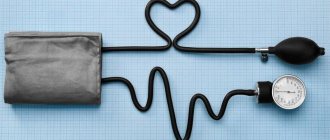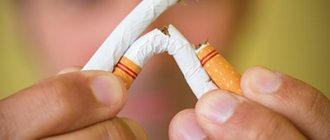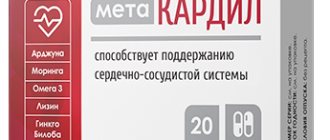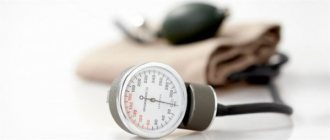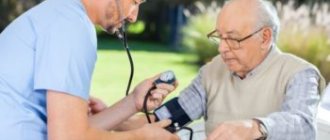24-hour blood pressure monitoring (ABPM) - an effective method for diagnosing arterial hypertension.
Arterial hypertension is one of the fundamental risk factors for the development of cardiovascular complications and mortality. In our country, more than 40% of adults suffer from this disease.
1
ABPM in "MedicCity"
2 Daily blood pressure monitoring
3 Diagnosis of hypertension at MedicCity
Hypertension negatively affects the quality of life and health in general, and over a long period of time it causes irreversible changes in the walls of blood vessels, leading to the development of severe cardiovascular pathology. At least 7.6 million deaths on the planet every year are associated with high blood pressure!
Meanwhile, early detection of the disease, combined with lifestyle changes, giving up bad habits and following the treatment plan prescribed by the doctor, leads to a reduction in the risk of deadly complications, extends working age and increases life expectancy.
In the past, it was difficult even for a specialist to distinguish a situational increase in blood pressure, for example, during stress, from real hypertension. Therefore, the introduction of such a method of cardiological examination as 24-hour blood pressure monitoring has become a kind of revolution in diagnostics.
The essence of the method of 24-hour blood pressure monitoring
ABPM is a continuous monitoring of blood pressure (BP) over 24 hours.
A special device measures the patient's systolic and diastolic blood pressure and pulse by analyzing pulse phenomena in a pneumatic cuff (oscilometric method) or recording sounds (Korotkoff sounds) through a microphone from the brachial artery (auscultatory method). To pump air into the cuff and record the results of the study, a recorder is used (it is secured to the belt with a belt); a cuff, similar to the one used in electronic blood pressure monitors, is attached to it using a flexible tube. The recorder used in medical practice differs from a conventional automatic tonometer in its higher accuracy class. To capture and decrypt data, the device is connected to a computer.
The undoubted advantage of the ABPM technique is that the device records the slightest fluctuations in blood pressure with high accuracy, therefore, with the help of this study, the doctor receives a much more accurate idea of the patient’s blood pressure than from self-measurement of blood pressure. Also, the advantages of the ABPM technique include frequent measurement of blood pressure and measurement of blood pressure during sleep, which makes it possible to accurately assess arterial hypertension and detect an increase in blood pressure during sleep.
1 Diagnosis of hypertension at MedicCity
2 ABPM in “MedicCity”
3 Examination for hypertension
Traditional methods
To normalize blood pressure and feel good at any time of the day, it is recommended to use traditional methods that are no less effective than medications. But before use, you should consult your doctor to avoid unwanted complications. A recipe for this herbal infusion will help you adjust your blood pressure. Grind and mix the following herbs in equal proportions: St. John's wort, mint, yarrow, chamomile, lovage. Pour the ingredients into a thermos, pour 1.5 liters of boiling water, and let it brew for 1.5-2 hours. Drink as tea, adding lemon and honey if desired. Regular use of the infusion will have a beneficial effect on the condition of blood vessels and the heart muscle, which will help prevent a hypertensive attack at night.
When is ABPM prescribed?
ABPM is carried out in the following cases:
- Arterial hypertension (identified elevated blood pressure numbers: 135/85 mmHg and above when measured at home; 140/90 mmHg and above when measured at a doctor’s appointment);
- arterial hypertension during pregnancy;
- assessment of the effectiveness of antihypertensive therapy;
- suspicion of “white coat hypertension”, when high blood pressure is recorded only when measured by medical staff;
- detection of increased blood pressure during sleep (high risk of acute cerebrovascular accident - stroke);
- arterial hypotension (blood pressure 90/60 mmHg and below);
- detection of orthostatic arterial hypotension.
Contraindications for the study:
- Exacerbation of skin diseases in the area of the cuff on the shoulder;
- disorders in the blood coagulation system with a tendency to bleeding (exacerbation stage);
- injuries of the upper extremities, contraindications to squeezing the shoulder with a cuff;
- obstruction of the patency of the brachial arteries identified during studies;
- significant heart rhythm disturbances;
- patient refusal.
Diagnosis of arterial hypotension using ABPM is irreplaceable due to the multifactorial nature of the development of this condition. For each individual patient, hypotension can be both a physiological norm and an independent illness; or may accompany another serious illness. Therefore, before prescribing medication or other treatment, it is necessary to understand the cause of low blood pressure in a person.
ABPM is also recommended for the following symptoms:
- constant fatigue or fatigue;
- frequent headaches, dizziness;
- blurred vision, spots before the eyes;
- noise, ringing, feeling of congestion in the ears.
Treatment of nocturnal hypertension
The most pleasant and delicious thing in treating hypertension or hypotension is, of course, drinking teas with the addition of lemon and honey.
Control and treatment of nocturnal hypertension should not be situational, and if a person suffers from such a pathology, the doctor must fully examine the patient and prescribe a course of drug therapy. This includes not only drugs that normalize blood pressure, but also diuretics, vitamins, and drugs that normalize heart function and restore vascular tone and resistance. The doctor prescribes a treatment regimen, which it is important to strictly adhere to and under no circumstances remove or add any foreign drug yourself. If the patient feels that there is no improvement, it is worth informing the doctor, who will analyze the situation and change the medicine if necessary.
What does ABPM diagnostics show?
Blood pressure monitoring allows you to:
- Confirm or refute the preliminary diagnosis of arterial hypertension and arterial hypotension;
- evaluate the effectiveness of previously prescribed treatment;
- select and adjust a drug therapy regimen to prevent episodes of hypo- and hypertension, especially at night;
- clarify the form of arterial hypertension (mild, borderline, moderate, severe);
- identify transient hypotensive and hypertensive episodes, orthostatic reactions.
Symptoms
| Pressure | Symptoms |
| Increased | If the pressure rises at night, the patient cannot sleep normally, he is tormented by nightmares and insomnia. Without taking the necessary measures, a severe headache develops over time, which is accompanied by nausea, belching, and an attack of vomiting. Lying on your back can cause an attack of suffocation, so you should be in an elevated state all the time. If your blood pressure often rises at night and becomes unwell, you should immediately seek medical advice. |
| Decreased | With low blood pressure, the head also begins to hurt severely when lying down. It is impossible to sleep, dizziness, chills, extremities become cold, and the skin becomes pale. Vision and hearing are impaired, sometimes the patient cannot navigate where he is. Low blood pressure can cause loss of consciousness, so it is worth monitoring the victim at all times and, if possible, providing first aid. |
How is 24-hour blood pressure monitoring performed?
A cuff is placed and secured on the lower third of the patient’s arm, connected by a flexible tube to a blood pressure monitor, which records the readings. This device is attached to the belt with a special belt.
The device automatically pumps and deflates air in the cuff, which will alternately compress and “release” the subject’s shoulder throughout the day. Sometimes the compression by the cuff is very noticeable - the patient will be warned about this during instruction. Inside the cuff there is a special sensor for recording blood pressure.
Blood pressure measurement occurs automatically after a signal is sent from the monitor’s memory unit. How often measurements will be taken is determined by the doctor individually for each patient when programming the device. Typically, the interval between measurements during the day is 15 minutes, during sleep - 30 minutes.
After 24 hours, the patient returns to remove the device. The readings are transferred to a computer for decoding. After studying the results, the cardiologist issues his conclusion and attaches to it the data recorded by the blood pressure monitor.
Patient's actions during ABPM
During 24-hour blood pressure monitoring, the patient leads a normal lifestyle, however, avoiding alcohol consumption.
Since the device should not touch water, you will have to do without a shower and bath.
When measuring in a sitting position, the patient should straighten his arm with the cuff and place it on the table; when walking, stop and lower his arm.
During the study, the patient will be asked to keep a diary, where he will need to record his feelings and complaints, as well as record the main stages of the day - time of activity, meals, going to bed and waking up, etc.
How to increase blood pressure?
When the pressure drops at night, the patient can drink hot, sweet coffee or tea, but this measure will only bring temporary relief, so you should always have medications with you that are effective in such cases. If blood pressure constantly fluctuates and the patient suffers from hypotension, the doctor will advise you to adjust your sleep and daytime routine, be less nervous, and avoid stressful situations.
Women who are constantly on debilitating diets often suffer from hypotension and pressure surges at night. To have a beautiful body and good health, it is not necessary to give up normal food and eat only lettuce leaves. It is enough to exclude sweets, animal fats, simple carbohydrates and bad habits from your diet. Then your weight will always be within normal limits, and there will be no problems with blood pressure.
If you feel a persistent deterioration in your health at night, call an ambulance immediately, as the situation may have a serious outcome.
Interpretation of ABPM results
After the procedure is completed, the data from the recorder is transferred to a computer, where it is automatically processed.
Blood pressure numbers (like pulse) are a value that depends on the circadian rhythm. In the morning and daytime hours, blood pressure and pulse levels are higher, while at night, lower values are typical.
Normal blood pressure levels in an adult range from 110/70 to 130/80 mm. rt. Art. The ABPM device, in addition to the average blood pressure figures (systolic blood pressure - SBP and diastolic blood pressure - DBP) per day/day/night, records the variability of the circadian rhythm, i.e. fluctuations in SBP and DBP up and down from the resulting average daily curve. In addition, the daily index is displayed, i.e. the difference between daytime and nighttime blood pressure readings as a percentage.
A daily index of 10-20% can be considered normal. This means that the average “nighttime” blood pressure numbers should be less than the “daytime” ones by at least 10%. Blood pressure variability is considered abnormal if at least one of the measurements produces numbers above or below normal blood pressure values.
Various indices of hypertension, the time and speed of the morning rise in blood pressure, and pulse blood pressure are also determined.
An increased risk of cardiovascular complications is determined (with increased variability of blood pressure, increased pulse blood pressure, with an increase in the time and speed of the morning rise in blood pressure).
However, only the attending cardiologist involved in functional diagnostics can judge the norm and deviations from it. It is his experience and qualifications that will allow him to correctly interpret the ABPM results and make a conclusion about the patient’s condition.
Why does pressure change, reasons
Sleep pressure depends on many factors: age and gender, the presence of chronic diseases, weight, even time of day.
Blood pressure rises in sleep
If a person’s blood pressure rises at night, then you should immediately pay attention to this, since when a person sleeps, pressure surges are excluded, because he is in a relaxed state and nothing can increase blood pressure. High blood pressure at night indicates that the patient is developing a dangerous disease such as hypertension. It is this that can provoke a sharp jump in blood pressure, even when a person is sleeping.
Enter your pressure
Move the sliders
120
on
80
BP is low during sleep
If your blood pressure drops slightly during sleep, this is a normal condition that should not be treated. When a person sleeps, the blood vessels dilate, and accordingly, blood pressure becomes lower, but after sleep, the functioning of the cardiovascular system normalizes, blood pressure rises to normal levels. But in the case of a sharp decrease in blood pressure at night, we can say that a serious malfunction occurred in the body, which provoked such a condition. This may be internal bleeding, impaired renal function, hormonal disorders, pathologies in the endocrine system, chronic inflammatory diseases.
24-hour blood pressure monitoring at MediCity
ABPM is a paid medical service everywhere.
In our clinic, this diagnostic procedure is affordable. You can sign up for it and other studies (bicycle ergometry, ECG, ECHO-KG, HOLTER) at any time convenient for you. To do this, just call our contact center by phone: +7 (495) 604-12-12.
Cardiologists and other highly qualified medical specialists at MedicCity will do everything to preserve and strengthen your health!



